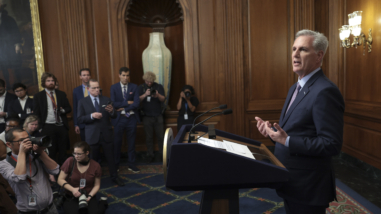The American Enterprise institute hosted a terrific conference earlier this week, in partnership with the Center for American Progress, to unveil a jointly issued report and interactive data base entitled States of Change: Demographics and Democracy. You can find these resources on AEI’s website and CAP’s website.
Over the past year, the first of a planned three-year effort, the States of Change project has looked back across four decades to analyze the demographic trends in age, race, ethnicity, education, family structure, and political participation across the fifty states that have brought our society to where we are today. The project has also looked out through 2060 to project how these trends will evolve in decades to come.
When Ruy Teixeira of CAP and Karlyn Bowman of AEI first approached us with the idea for this joint project in late 2013, we were intrigued. We ended up funding it—and not just because of its substantive importance for our work and that of many others in the field of democracy reform. We also appreciated their aspiration, as representatives of institutions working on opposite sides of the political spectrum, to establish a shared set of facts and projections, then organize a series of wide-ranging discussions, debates, and white papers about the implications of what they found for our politics and policy. Given that so many think tanks presume they have a monopoly on truth, it was refreshing to encounter institutions that felt they could get to better answers by working together. Judging by yesterday’s effort, they’re off to a great start.
I won’t begin to do justice to the richness and depth of the information that you can find in States of Change; let me just encourage you to dig into it yourself. (If you’d like an overview, you might watch Gwen Ifill’s interview with Ruy and Karyln on the PBS NewsHour.)
Finally I’d be remiss if I didn’t tip my hat to Ruy Teixeira of CAP and Karlyn Bowman of AEI and the colleagues they have engaged in this effort. Karlyn and Ruy, along with Bill Frey of the Brookings Institution, who joined forces with Ruy to drive the underlying demographic analysis, are adeptly pulling off this collaboration. I can imagine that it hasn’t always been easy, but their partnership has been a real credit to them and their institutions. Indeed, to my mind it is an example of think tanks at their best. It’s been our pleasure to support them thus far and we look forward to seeing what comes next.



